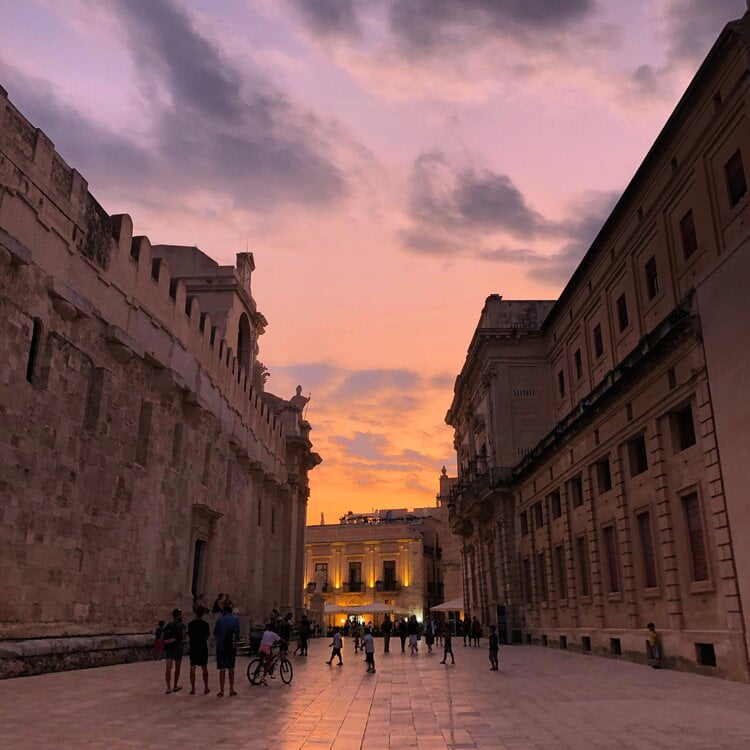Of all the places to explore in Sicily (of which there are a lot) the city of Siracusa has long been a favorite of ours. Located on the south east coast of Sicily, Siracusa and the little island of Ortigia have ancient ruins, impressive Baroque architecture and fun shopping opportunities for visitors. People often do a whistlestop tour of the city and then head on to their next stop but this means missing out on some of the best parts. So, here’s our guide to spending a day in Siracusa and Ortigia.
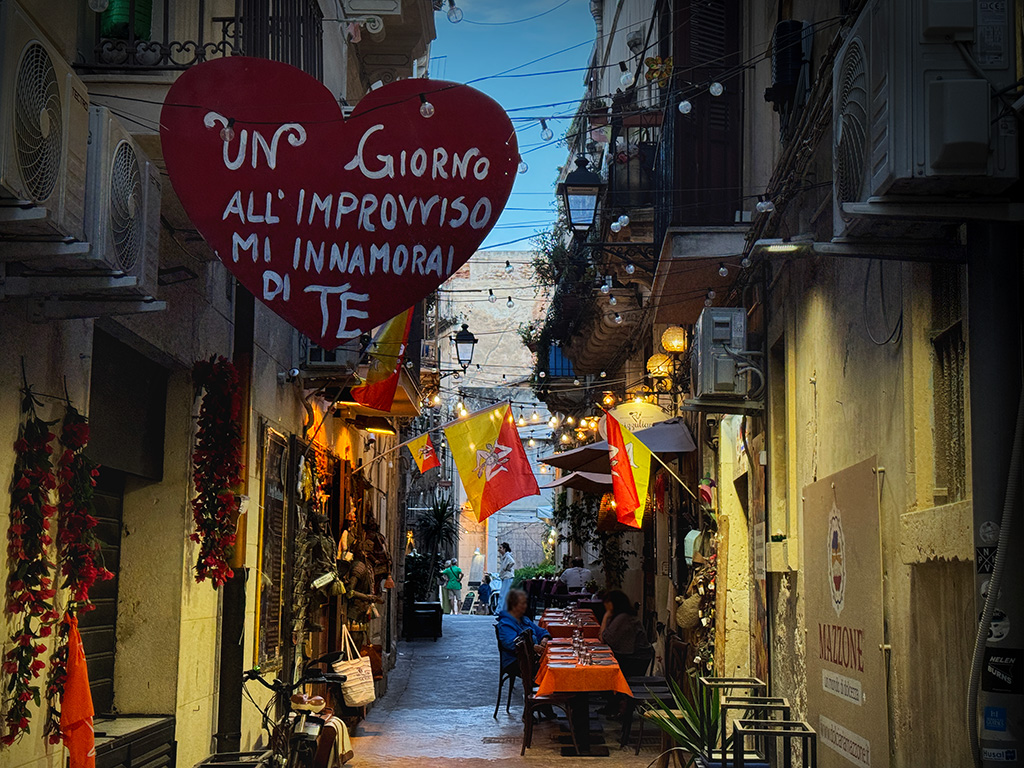
An Introduction to Siracusa and Ortigia
When we say Siracusa has ancient origins, we mean it. Established by Greek colonists looking for new opportunities, Siracusa was founded in the 8th century BC. Originally the settlement was focused on the small island of Ortigia, but as the wealth and power of the city-state grew, so did the city itself.
Siracusa was initially one of many Greek colonies in Sicily, but over time became one of the most important and powerful. They controlled large areas of the land and sea, gathering huge amounts of money and goods from trade. This money went into improving the city, with great temples, altars and a theater being built.
Siracusa In Later Centuries
The glory of Siracusa was not to last however. A series of conflicts between the ancient Romans and the Carthaginians involving Sicily during the 3rd and 2nd centuries BC marked the end of the independent Greek city states here. Siracusa was on the losing side, conquered by the Romans.
Siracusa was then subject to Roman rule, but was preeminent among the Sicilian cities. It became the capital of the Roman province and grand Roman buildings were added to the city and Ortigia island. After the Western Roman Empire collapsed, Siracusa was under the control of many different foreign powers. First the Vandals then the Byzantines, the Arabs in the 9th century, followed by the Normans two centuries later and then finally the Spanish.
All these different cultural influences have left their mark on the city. Everywhere you look there is something interesting or beautiful to see, so whether you’re visiting Ortigia on a day trip or spending a while exploring the entire island and beyond, you’ll have no end of things to do.
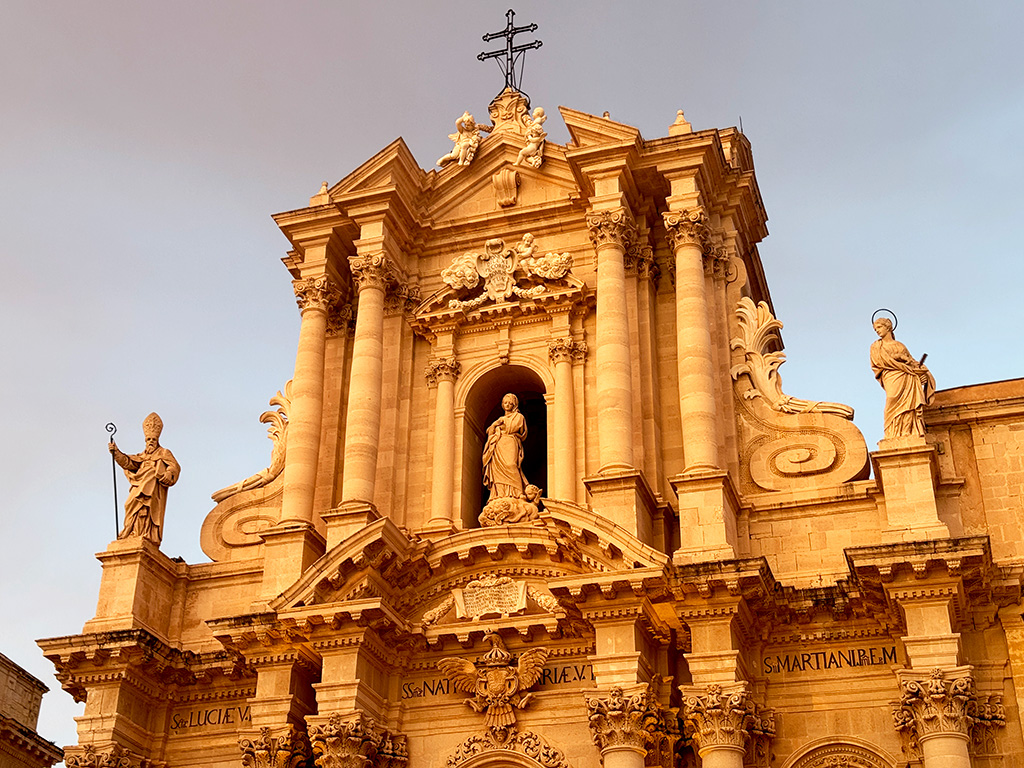
Start Your Day in Ancient Syracuse
We recommend starting your day in Siracusa and Ortigia with the impressive sights of ancient Siracusa. Firstly, this is because understanding the context of the ancient city is helpful when exploring the modern day city.
But also this is because you do not want to be walking around outside in the hot Sicilian sun any later than you can help. Aim to get to the Neapolis Archaeological Park for when it opens, as there is very little shade in most sections and it gets extremely hot even in late spring/early fall.
Neapolis Archaeological Park
The Neapolis Archaeological Park is very large, reflecting the huge size of the monuments and ruins within. You should give yourself at least 2 hours to explore, but you could easily spend longer if you wanted.
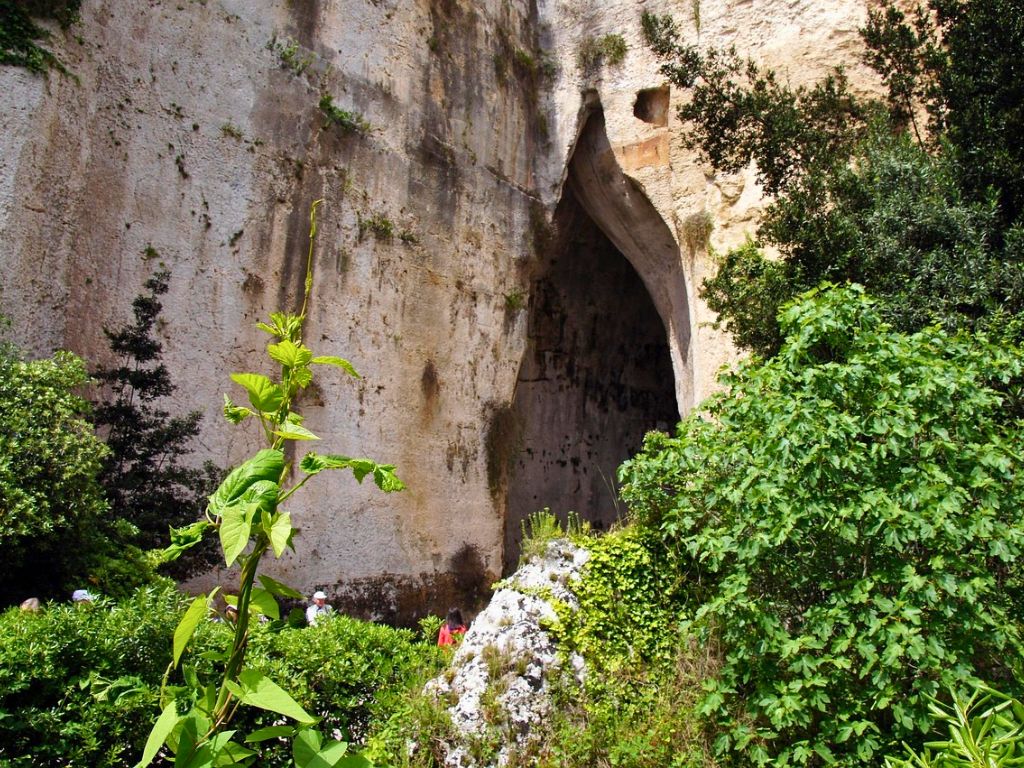
What To See In The Park
There are some key sights to see that we recommend making time for, don’t miss:
- The Greek Theatre. Originally built around 500 BC, the seats of the Greek theater are carved directly out of the stone. Greek theaters were not just entertainment venues, they also were the location of public gatherings, and this one is an excellent example. The acoustics are so good that the theater is still used for concerts today.
- The Ear of Dionysius. Walking through the plants and trees, you’ll come across a huge cave, stretching up high into the rock. From a distance the shape resembles a large ear, and the story goes that the famous painter Caravaggio named it ‘the ear of Dionysius’ for an ancient tyrant ruler of the city. Dionysius would supposedly use the cave’s acoustics to listen to slaves talking as they cut out rock below for any hint of rebellion.
- The Altar of Hieron II. At first glance this altar doesn’t seem as impressive as the other sights in the park. However when you realize just how big it is, the altar takes on a new significance. Chiselled out of the rock, the altar was created in the 3rd century BC, dedicated to Zeus, the supreme god in the Greek pantheon. Every year a huge ceremony took place here where 450 oxen were sacrificed all at once. This was possible because the altar was the longest that was ever constructed in the entire Greek world.
- The Roman Amphitheater. Dating from the later period when the ancient Romans were in control of Siracusa and Sicily, it is interesting to see the differences between the Greek theater and Roman amphitheater. The Roman style is open and free-standing, not built into the rock, but there is less of the structure left as a result.
Paolo Orsi Archaeological Museum
Once you’ve seen all the ruins of ancient Syracuse in their original location, it’s time to head to the nearby archeological museum to see some of the many items found there.
A short distance from the archeological park, the museum is not huge so we recommend incorporating it into your one day in Siracusa Sicily. Learning more about the context of the ancient city and the artefacts found there is fascinating, plus being inside the museum is a good escape from the heat if you’re visiting in summer.
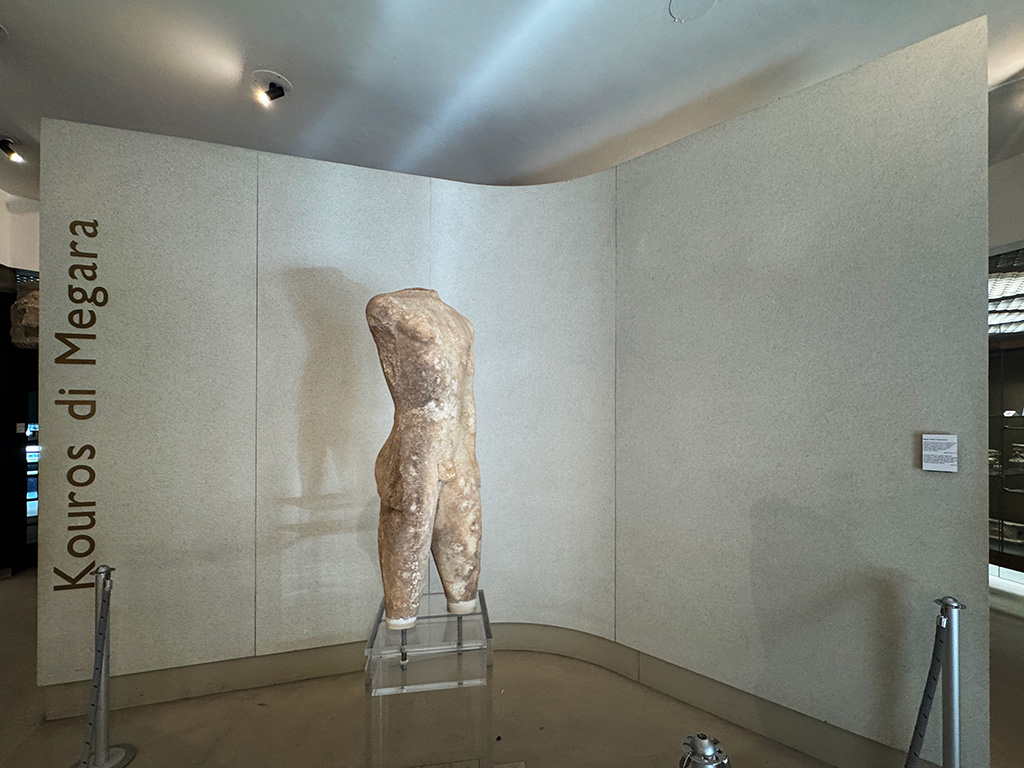
Laid out in an unusual format, the museum is split into different wings, covering specific areas of interest. Downstairs is a coin collection with many examples from Syracuse and other Greek city states, and then the visit route takes you through the story of this part of the world. The collection starts with prehistoric times, going through the founding of the city and its history, including a section dedicated to the merging of the Greek and Roman styles.
What To See In The Museum
The museum is best enjoyed by looking at pieces you find interesting, rather than trying to read every single piece of information, as there is a lot on display. Some of our favorite parts of the collection are:
- The models of the three temples in ancient Syracuse. Ruins of two of the three can still be seen in Ortigia (and we’ll see them in this day trip) but it’s really great to see them as it’s thought they looked originally.
- Skeletons of dwarf elephants. Dating from the Pleistocene age, these skeletons are not only interesting from an evolutionary perspective. Some historians have hypothetized that they were the origin of the Cyclops myth, as without their trunks, the bone structure does look like the animal had one large eye.
- Ancient Greek funerary statues. Known as Kouros, these statues are some of the earliest style of Greek sculpture. Stiff and rigid figures compared to later styles, they are nonetheless fascinating to see in person.
Take a Break in a Day in Siracusa and Ortigia on Ortigia Island
After a busy morning getting to know the ancient city-state, it’s time to get back to modern day for a while.
From the archaeological museum, take the local bus or jump in a taxi for the short ride to the the bridges connecting Ortigia to the mainland. From where you get dropped off, make your way to Piazza Pancali. This piazza is the starting point for our exploration of Ortigia, and just up ahead is a quick stop before we take a break.
You’ll come across an open space which at first seems to be just a pile of rubble. Look up to the right however and you’ll see the ruins of the Temple of Apollo, the first Doric temple in Sicily. Built around 580 BC, the columns that still stand are more basic than later examples but when you think of how old they are, it’s a really impressive sight.
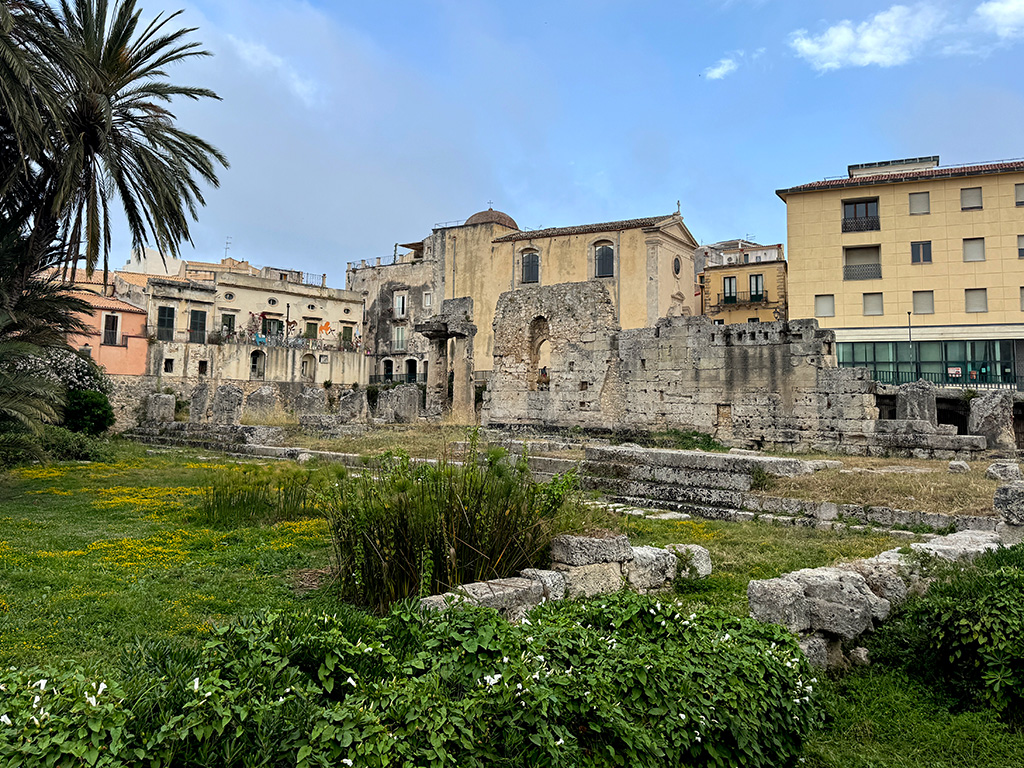
Once you’ve seen the temple, it’s a short walk to the Ortigia market which makes the perfect lunch spot. There are lots of good options here varying from sandwich stalls to sit-down formal restaurants so pick whichever you like the look of and enjoy a well-earned break.
Explore Ortigia’s Layers of History
Once you’ve had lunch and an espresso for an energy boost, it’s time to explore Ortigia’s old town and see some of its historical landmarks.
From the market, walk back past the Temple of Apollo and head up Corso Matteotti. At the end you’ll find a large modern fountain in Piazza Archimede, featuring Artemis the hunter with a large Banco di Sicilia behind it.
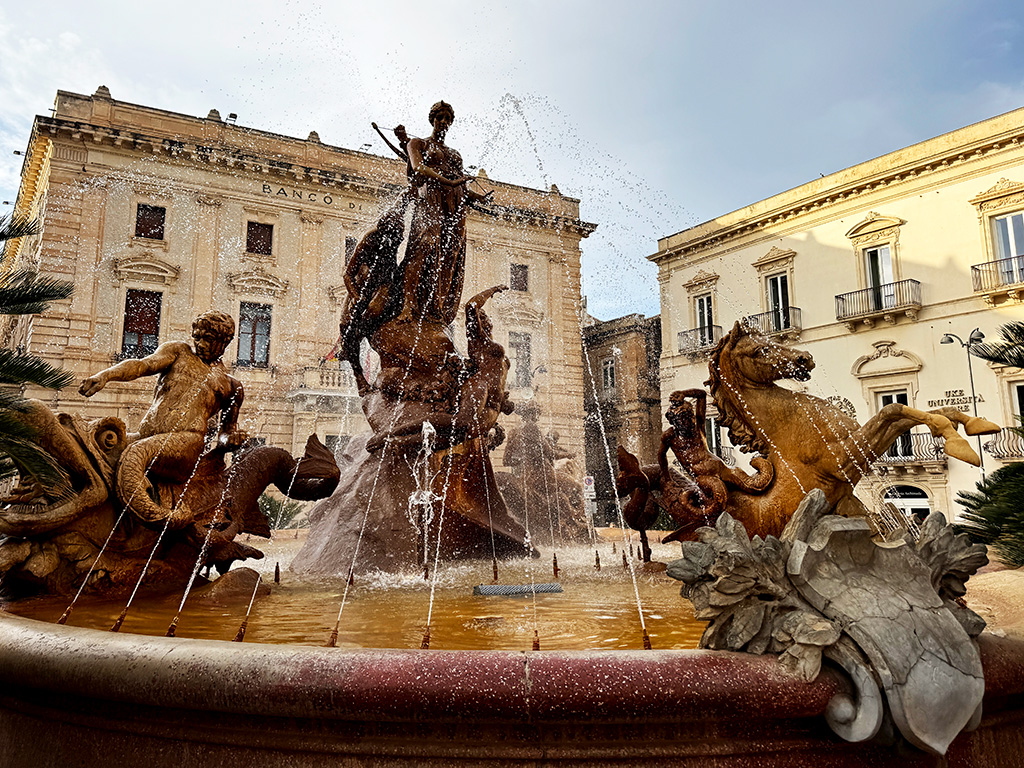
From here turn left and join Via Cavour, which opens out onto Piazza Duomo and the stunning Duomo di Ortigia in the historical centre.
On our Sicily adventures we always talk about how the island has been shaped by the many people who have stayed here. The layers and blending of history in Sicily are on full view in the Siracusa cathedral, making it a must-visit location.
Ortigia Cathedral
As we talked about in our recent blog post, there are many examples of Greek temples in Sicily. At first glance it does not seem as if this dazzling Baroque facade has anything to do with ancient Greek ruins, but walk up to the left of the cathedral and the religious site’s long history will become clear.
On the side of the Duomo you can see multiple ancient columns built into the walls. These weren’t brought here, what you are seeing are the columns of the Temple of Athena, built on the highest point of the island of Ortigia in 480 BC. The temple dedicated to the goddess Athena was still standing when the Byzantines were in control of the island.
Wanting to build a church and understanding the importance of the site, the Byzantines simply filled in the space between the columns to create the new structure. This means that when you walk inside the cathedral, you can see exactly what size an ancient Greek temple would have been.
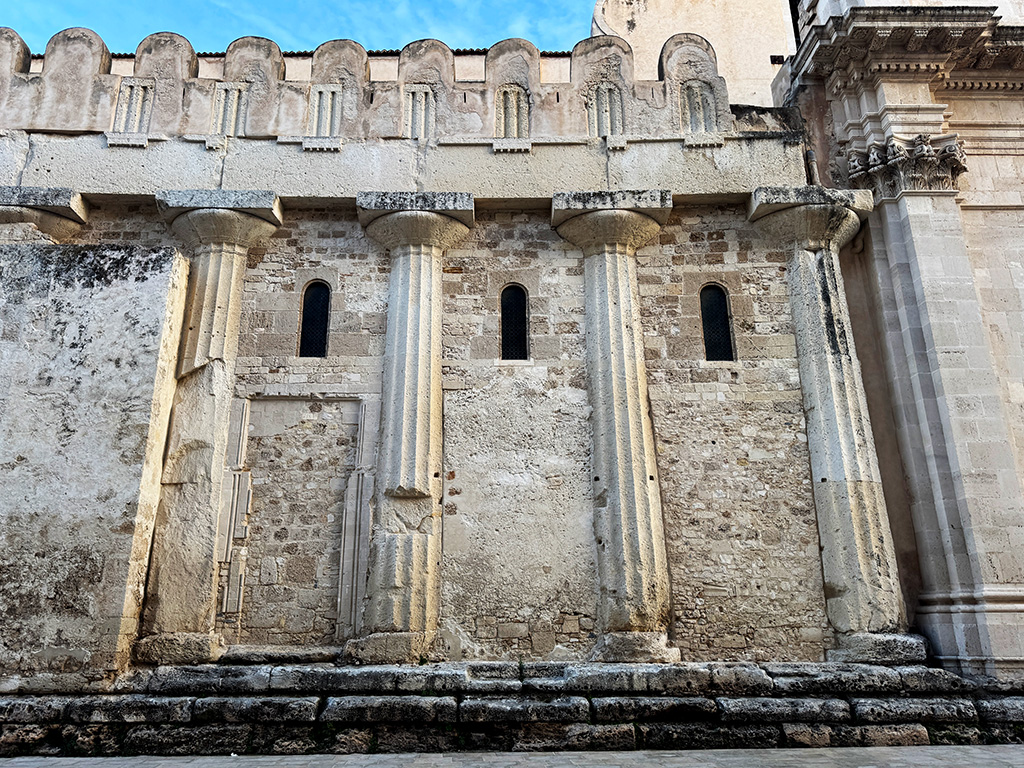
The cathedral was turned into a mosque by the Arabs for a time before the Normans came along and converted it back into a church. Norman mosaics and decorative details were added inside, but then major works were needed after the severe earthquake of 1693. The Baroque details we can see now were added at this time, creating a fascinating mix of styles from across the centuries.
Going Deeper Into Ortigia
Once you’ve visited the Duomo, head back out into the piazza. This is one of the best places to enjoy the Sicilian atmosphere, with people singing or playing guitar, locals strolling through and some of the most beautiful afternoon light we’ve ever seen.
As well as the cathedral, on this piazza you can see the City Hall, multiple ornate palaces and the church of Santa Lucia alla Badia; the patron saint of Siracusa. If you’ve watched The Leopard series on Netflix recently, this piazza was used as the location of the central family’s country home which was fun to see on screen!
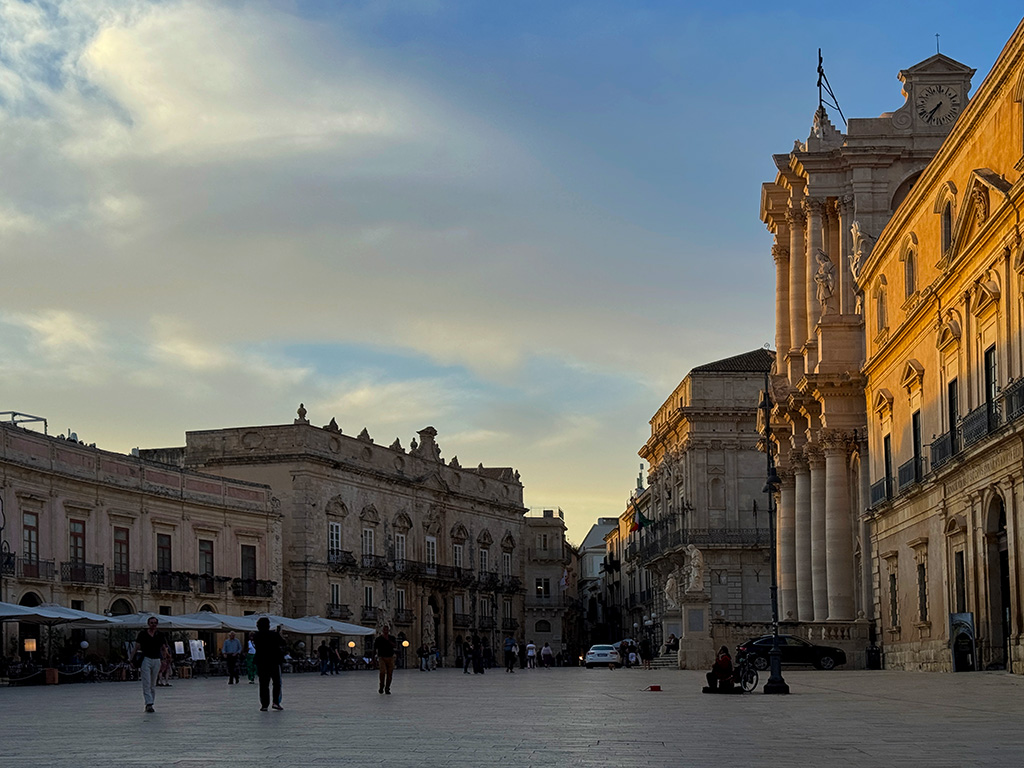
Take a slight detour back down Via Cavour to loop round the Artemis fountain and walk up Via Roma. Filled with all sorts of shops, you are certain to find a souvenir or two to take back with you, but even just window-shopping is enjoyable here.
Your final destination on this exploration of Ortigia is the Fountain of Arethusa – turn right at the end of Via Roma and it’s just a few minutes walk from there.
End A Day In Siracusa and Ortigia At Sunset
The Fountain of Arethusa is today more commonly known for the ducks that live here, but this is a very special place. When the Greeks were traveling, looking for somewhere to settle, they came across an island with a freshwater spring. Fresh water meant life, as without it people could not permanently settle down, and combined with the natural harbor and defendable positions, the island of Ortigia was the perfect place.
While the spiritual significance of the site has faded over the centuries, the natural water is still there. Spend a little time watching the ducks (in spring there are always cute ducklings) and consider you are standing in the same place as the original Greeks did over a thousand years ago.
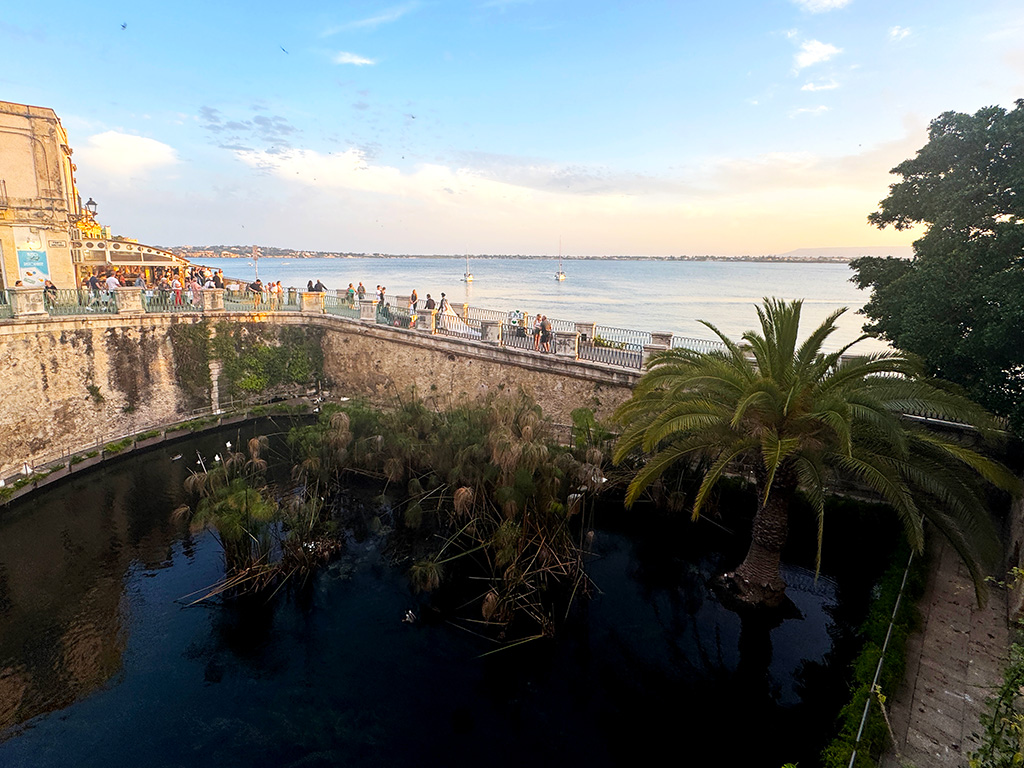
By this time the sun will be starting to set. While you can simply admire the sunset across the water of the Mediterranean sea from the different viewpoints, our recommendation is to walk down to the left of the fountain. Here you’ll find a series of restaurants and bars along the city walls. Pick one (they are all pretty similar) and enjoy a cocktail or glass of wine as you watch the sun go down. In our view this is the perfect ending to a day in Siracusa and Ortigia.
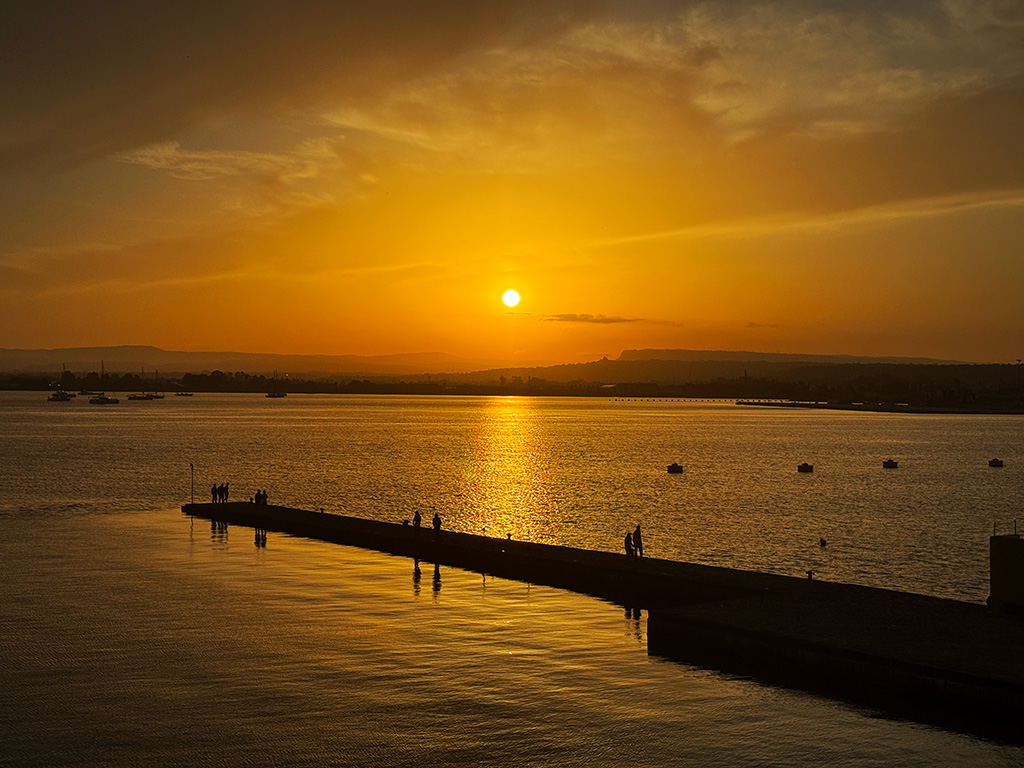
Join Us in Sicily
A day in Siracusa and Ortigia is only a small part of what makes Sicily so special to us all at Adventures with Sarah. There is so much more to explore here that we go back year after year, so if you want to join us in the future you can do so on our Sicily Highlights tour. Get in touch today if you’d like to know more about adventuring in Sicily with us.

